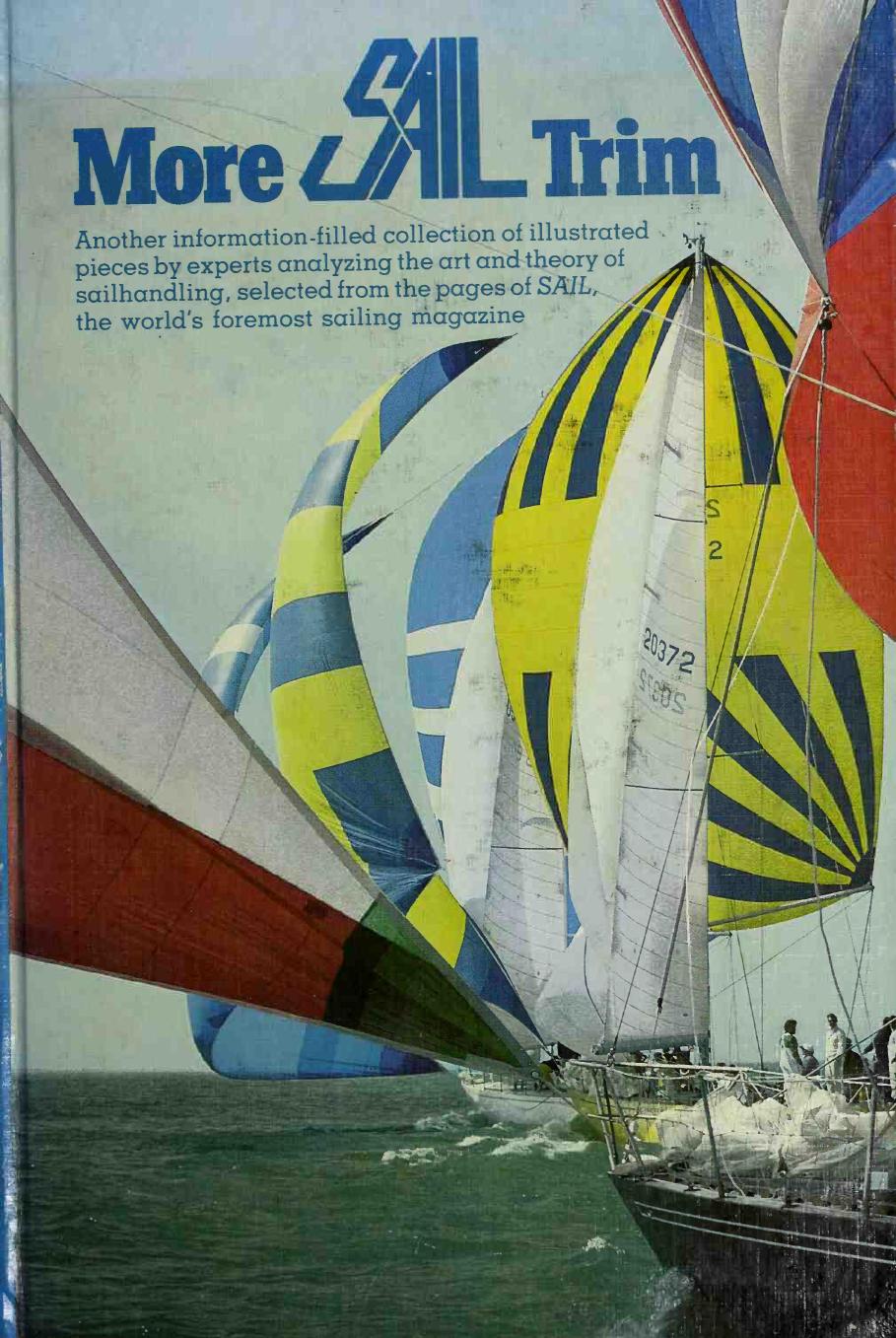More Sail trim : a second anthology of articles concerning efficiency in sailing by Madden Anne

Author:Madden, Anne
Language: eng
Format: epub, pdf
Tags: Sailing, Sails
Publisher: Boston, Mass. : Sail Books ; New York, NY : distributed to bookstores by Norton
Published: 1979-10-14T16:00:00+00:00
more pressure here
balance
Without blooper/shooter to balance, there is too much pressure on windward side, boat veers to port and gybes
To keep even pressure without shooter/blooper move pole forward and overtrim sail
Blooper/shooter combined with mainsail equalizes pressure
Figure 2: Control problems sailing downwind become serious if sail areas are not kept in balance on either side of boat
trimming the spinnaker. As soon as the boat starts to roll, starts to lose control, or the blooper collapses, he immediately starts winding the spinnaker in frantically. In doing so he brings the boat back into balance, gets the sails balanced over the boat, and the boat will then proceed again in a seamanlike manner in the right direction.
I have found in moderate surfing conditions it often pays to sail around 165-175 degrees apparent wind rather than sailing dead downwind. In doing so I can take advantage of the blooper and the surfing conditions. However, if conditions get really strong and you can surf at all times when you are running square, it definitely pays to run as close to 180 degrees as possible. When doing this, use a smaller spinnaker as well for this is a very dangerous time as far as control is concerned.
In a windy Newport race week series last year on Mareva, a Swan 39, we sailed a downwind leg with a full-sized flanker instead of using a maximum-sized triradial spinnaker. Though the flanker had less area and reduced shoulders, we were able to sail straight to the leeward mark on the square run, whereas all the other boats with larger spinnakers went running way out to one side of the course, and then gybed and came back in again. Because everyone was sailing at maximum hull speed we got to the leeward mark a considerable distance ahead of all of those other boats. So the golden rule for running square in heavy conditions is concentration, and keep the boat under the sails.
Gybing is always a very touchy issue in strong wind conditions. I tend to be extremely cautious when I gybe a modern boat for I know a large amount of
Download
More Sail trim : a second anthology of articles concerning efficiency in sailing by Madden Anne.pdf
This site does not store any files on its server. We only index and link to content provided by other sites. Please contact the content providers to delete copyright contents if any and email us, we'll remove relevant links or contents immediately.
What's Done in Darkness by Kayla Perrin(25500)
Shot Through the Heart: DI Grace Fisher 2 by Isabelle Grey(18219)
Shot Through the Heart by Mercy Celeste(18160)
The Fifty Shades Trilogy & Grey by E L James(17774)
The 3rd Cycle of the Betrayed Series Collection: Extremely Controversial Historical Thrillers (Betrayed Series Boxed set) by McCray Carolyn(13189)
The Subtle Art of Not Giving a F*ck by Mark Manson(12912)
Scorched Earth by Nick Kyme(11832)
Stepbrother Stories 2 - 21 Taboo Story Collection (Brother Sister Stepbrother Stepsister Taboo Pseudo Incest Family Virgin Creampie Pregnant Forced Pregnancy Breeding) by Roxi Harding(11040)
Drei Generationen auf dem Jakobsweg by Stein Pia(10217)
Suna by Ziefle Pia(10186)
Scythe by Neal Shusterman(9259)
International Relations from the Global South; Worlds of Difference; First Edition by Arlene B. Tickner & Karen Smith(8608)
Successful Proposal Strategies for Small Businesses: Using Knowledge Management ot Win Govenment, Private Sector, and International Contracts 3rd Edition by Robert Frey(8419)
This is Going to Hurt by Adam Kay(7695)
Dirty Filthy Fix: A Fixed Trilogy Novella by Laurelin Paige(6453)
He Loves Me...KNOT by RC Boldt(5804)
How to Make Love to a Negro Without Getting Tired by Dany LaFerrière(5378)
Interdimensional Brothel by F4U(5304)
Thankful For Her by Alexa Riley(5161)
